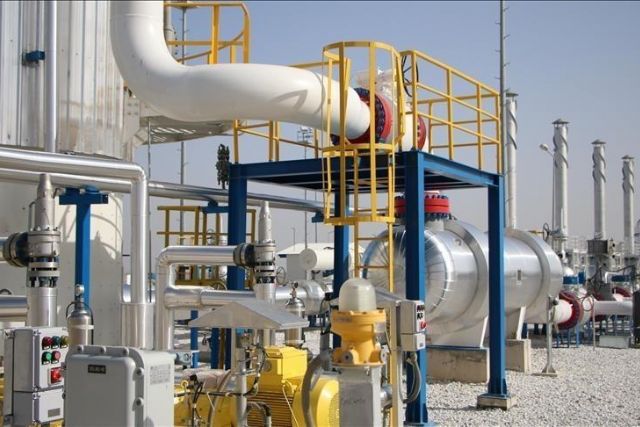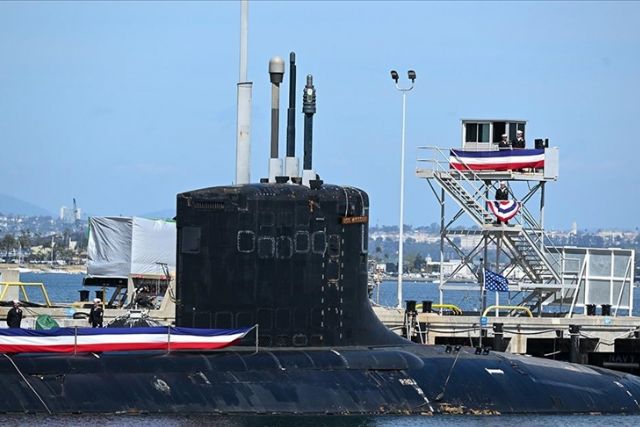Over half of Europe's LNG infrastructure could become stranded assets by 2030
Building excessive liquified natural gas infrastructure capacity is 'world's most expensive and unnecessary insurance policy': Analyst

LONDON
Over half of Europe's liquified natural gas (LNG) import capacity, likely to exceed 400 billion cubic meters by 2030, could become stranded assets as the demand is likely to be around 150 billion cubic meters, according to the international research organization Institute for Energy Economics and Financial Analysis (IEEFA) Wednesday.
To reduce the dependency on Russian gas and to diversify sources, Europe is boosting its LNG infrastructure by one-third by 2030.
However, the IEEFA data shows that there is a significant discrepancy between the regasification infrastructure being built and the planned and forecasted LNG demand across all countries that were analyzed.
Europe's LNG terminal capacity stood at 270 billion cubic meters at the end of last year and could exceed 400 billion cubic meters based on the current infrastructure plans, according to the European LNG Tracker launched by IEEFA.
As the European LNG demand in 2030 is forecast to be around 150 billion cubic meters according to the IEEFA, this leaves a gap of about 250 billion cubic meters of unused capacity, considering the estimated 400 billion infrastructure capacity.
Countries with the highest risk of stranded assets forecasted are Spain with 50 billion cubic meters, Türkiye with 44 billion, and the UK with 40 billion cubic meters.
These figures are 14 billion cubic meters in France, 10 billion in Italy, and 9 billion cubic meters in Germany for 2030.
Europe's expected LNG capacity in 2030 could be more than the EU's total gas consumption of 413 billion cubic meters in 2021.
IEEFA estimates that Europe's total gas demand will be about 390 billion cubic meters in 2030.
"This is the world's most expensive and unnecessary insurance policy. Europe must carefully balance its gas and LNG systems and avoid tipping the scale from reliability to redundancy," said Ana Maria Jaller-Makarewicz, an energy analyst at IEEFA Europe.
"Boosting Europe's LNG infrastructure will not necessarily increase reliability. There is a tangible risk that assets could become stranded."
The utilization rate of Europe's LNG terminals is forecast to be 36% by 2030, including those that are currently under planning.
"Over-engineered networks are expensive to build and maintain. Decisions to expand Europe's LNG infrastructure must be based on future demand needs and take into account that the EU is planning to reduce gas demand by at least one-third by 2030," Jaller-Makarewicz warned.
Europe's dependency on Russian LNG deepening
Despite about an 80% fall in Russian gas flows to Europe by pipeline, the demand for Russian LNG in Europe saw a significant rise.
Europe's LNG imports from Russia in 2022 reached 20.2 billion cubic meters, 12% up from 18 billion cubic meters in 2021. Russia was the third-largest LNG exporter of Europe in 2022, after the US and Qatar.
France was the biggest LNG importer in Europe with 35.7 billion cubic meters in 2022. The country imported 7.4 billion cubic meters of this amount from Russia, making it the largest Russian LNG buyer.
Spain imported 5.2 billion cubic meters of LNG from Russia, out of its total 29.5 billion cubic meters of imports.
The UK was the third-largest LNG buyer in Europe with 26.5 billion cubic meters, however, the country halted imports of Russian LNG in April 2022, so creating an 85% drop compared to 2021.
Belgium became the third-biggest Russian LNG importer with 3 billion cubic meters of its total imports of 12.9 billion cubic meters.
France and Belgium's LNG imports from Russia rose by 58% and Spain's by 50% in 2022 compared to the previous year.
Other significant LNG importers in Europe last year were the Netherlands with 17.1 billion cubic meters, Türkiye with 15.5 billion, and Italy with 14.8 billion cubic meters.
IEEFA said Greece, Italy, and Türkiye started importing Russian LNG in 2022.





